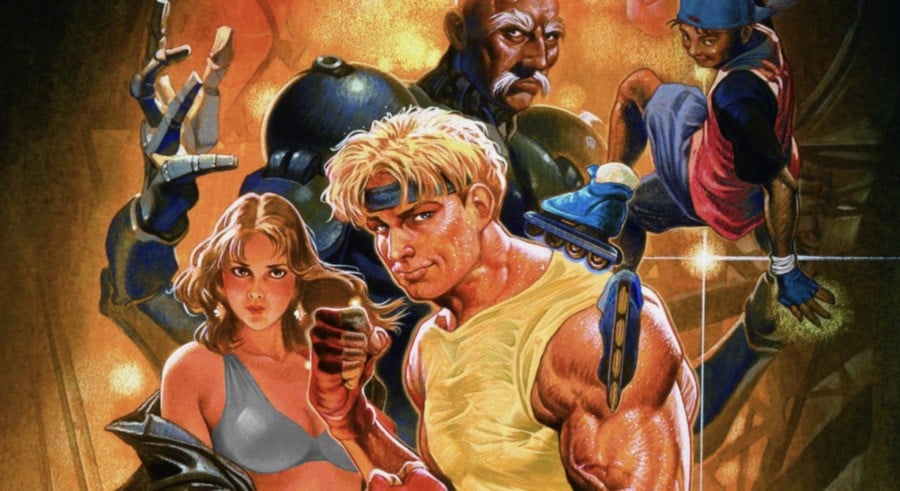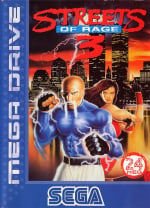
Sega's Streets of Rage 2 is rightly regarded as one of the finest side-scrolling beat 'em ups ever made. It is, to many people, the absolute zenith of the genre; while we've had side-scrollers since then that have punched very high (including Streets of Rage 4), few have come close to matching the pure brilliance, balance and spectacle of the 1992 Mega Drive / Genesis sequel.
One of those 'also-rans' is, ironically, Streets of Rage 3. While it was showered with praise at the time of release, it has been judged a little more harshly by history, with some critics pointing out that it doesn't add enough to the second game – and that its Yuzo Koshrio soundtrack isn't quite as good, either.
It turns out there's actually a good reason for Streets of Rage 3 not being in the same league as its predecessor – Yuzo's sister, Ayano, wasn't involved with it.
Ayano Koshiro may not be quite as famous as her brother, but there's a good chance you've played a game she's been involved with. During her glittering career, she has worked as an artist, designer and planner on a wide range of games, including ActRaiser, Sonic the Hedgehog and Lunar: The Silver Star. She also co-founded Ancient with her mother and brother, and continues to work there to this very day.
Ayano Koshiro acted as a planner on Streets of Rage 2, and, by her own admission, was. "largely in charge" of the game. Her (now) husband Hitoshi Ariga adds that "the people in the art department always listened to her."
Ayano also acted as the lead graphic designer and came up with the graphics, characters, and combat mechanics. She and her brother Yuzo were obsessed with Capcom's Street Fighter II at the time – even going as far as to have a cabinet installed in Ancient's office – and the iconic one-on-one brawler informed many of the design choices made in Streets of Rage 2.
Ayano describes just how deeply invested she was in the game:
The development team was quite small, and it's not easy to say exactly who worked on which elements. But it was the small team that made the game possible. Sega even sent their own artists to work with us on Streets of Rage 2. But I didn't really like some of the graphics they did, so we ended up having to fix a lot of it or replace it altogether. I remember one thing. I had a phone meeting with Sega and it got really heated because I really wanted to include the boss-character Shiva in Versus mode. I was working on his sprite, and if I had another week, he would have been done. But we didn't have that week. I remember us arguing, and I was crying on the phone. I would have made it, but they wouldn't let me. The game was almost done, and we were working on the final balancing tweaks.
Usually, I could just do what I wanted. Most of the time, I did what I thought was good for myself. Or what seemed the most reasonable to me. Where do characters stand, when should enemies appear, what do they look like, what can the boss do... a boss in the first level doesn't do much, of course. But then, when you get to the fourth level, it has to feel like a boss from the middle of the game. These are all things that no one ever taught me, no one told me that I had to do it exactly this way or that way. I did it the way I thought was smart. And that's how my games came about.
Amazingly, despite the critical and commercial success of the second game, only one Koshrio was invited back to work on the third outing – and that was Yuzo on musical duties alongside Motohiro Kawashima), not Ayano.
As to why this was the case, Ayano is in the dark. Speaking to us for an exclusive interview, she said:
I don't really know. It was Sega's decision. I think they just wanted to produce the game internally instead of outsourcing it, like the second part. Unfortunately, we were not involved in that decision. They just didn't offer us the project.
Ayano's reaction to seeing the third game when it was released would chime with a lot of fans – but she was polite enough to keep those thoughts to herself, at least then:
I saw Streets of Rage 3 back in the day, and a lot of people think it's a little... hmmm... shallow? I’m not saying it’s bad, but it's not outstandingly good either, it lacks pace and rhythm. It feels the same from start to finish. I always wondered why they did it that way. I had my criticisms and things that puzzled me. But I didn't say that to the creators' faces at the time.
Streets of Rage 3 is by no means a bad game, but few would argue it's as good as its forerunner. If you fancy checking it out, it's on the Mega Drive Mini II micro-console – although it's missing one controversial element which was present in the original Japanese version of the game.



